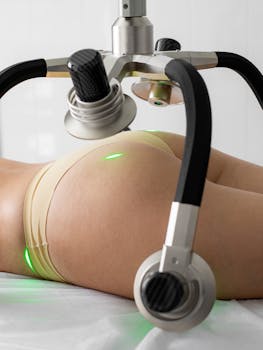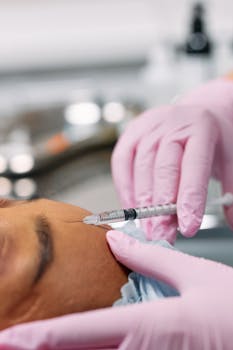Deciding whether to move forward with eyelid ptosis surgery cost can feel overwhelming. Prices vary widely depending on cause, surgeon experience, and whether insurance covers the procedure. This guide breaks down common price ranges, what drives cost differences, and specific scenarios—like congenital ptosis surgery cost or dermatochalasis surgery cost—so you can plan and ask the right questions during consultation.
Eyelid ptosis surgery costs: what affects the price
Several factors determine the final charge for ptosis repair. Facility fees, anesthesia, surgeon fees, pre-operative testing, post-operative care, and whether the repair is on one eye or both all influence the total. For patients wondering how much does ptosis surgery cost, here’s a typical breakdown:
- Surgeon fee: varies by experience and geographic region.
- Anesthesia fee: local vs general anesthesia changes cost.
- Facility fee: outpatient clinic vs hospital operating room.
- Complexity: simple levator advancement vs frontalis sling for severe cases.
- Insurance coverage: if ptosis affects vision, insurers may cover part or all—see below.
Range and examples: how much is droopy eyelid surgery?
Broadly speaking, ptosis surgery price for cosmetic-only cases can range from a few thousand dollars to over $6,000. For medically necessary procedures where vision is affected, many patients pay less out-of-pocket because insurers may cover the ptosis operation cost. Questions commonly asked include how much is eyelid ptosis surgery, how much is ptosis surgery for one eye, and how much is ptosis surgery. Typical numbers you might see in consultations:
- Ptosis repair cost (one eye, simple procedure): $2,000–$4,000.
- Ptosis repair cost (both eyes, more complex): $4,000–$8,000+
- Ptosis operation cost in hospital settings tends to be higher due to facility fees.
Types of ptosis and related costs
Understanding the cause helps predict price. Congenital ptosis surgery cost often differs from adult acquired ptosis because childhood procedures may require general anesthesia and specialized pediatric surgical teams. Dermatochalasis surgery cost—when excess eyelid skin is removed—can be billed as blepharoplasty and may be separate from ptosis correction or combined in one session.
Some common scenarios and how they influence pricing:
- Congenital ptosis surgery cost: often higher due to the need for pediatric anesthesia and possible staged procedures.
- Dermatochalasis surgery cost: if skin removal is needed, combined procedures can be more efficient but increase total cost.
- Ptosis eye surgery cost vs cosmetic blepharoplasty: insurance is more likely to cover ptosis eye surgery cost when vision impairment is documented.
Insurance, documentation, and ptosis surgery cost with insurance
Insurance coverage can dramatically reduce out-of-pocket expense. To qualify, documentation usually needs to show that the droopy eyelid obstructs the visual axis or causes functional issues. Ask your surgeon about visual field testing, photographs, and detailed pre-operative notes—these support claims for coverage. Patients often ask specifically about ptosis surgery cost with insurance; plan for co-pays, deductibles, and pre-authorization requirements.
When insurance doesn’t apply, elective ptosis surgery price reflects all provider and facility charges. If you’re comparing quotes, ask for an itemized estimate showing surgeon, anesthesia, and facility fees so you can compare apples to apples.
For a clinical overview of ptosis causes and treatment options, see this review from a trusted medical resource: StatPearls — Ptosis.
If you’re preparing for recovery, timelines can vary. For general facial surgery recovery expectations, you may find helpful guidance at this related WellnessHQ resource: descriptive anchor text.
Questions to ask at consultation
- What specific technique will you use and why? (This affects ptosis operation cost and recovery.)
- Is the quoted price all-inclusive? Ask about follow-up visits, materials, and potential revision costs.
- If only one eye requires repair, ask for a separate estimate for how much is ptosis surgery for one eye.
- Will my insurer require specific documentation to consider this medically necessary?
Takeaways
- Costs vary widely: expect several thousand dollars for most procedures.
- Insurance may lower out-of-pocket expense when ptosis affects vision; documentation is key.
- Ask for itemized estimates and compare surgeon experience, facility fees, and anesthesia choices.
- Different conditions (congenital ptosis, dermatochalasis) change both technique and price.
FAQ — Is ptosis surgery covered by insurance?
Coverage depends on whether the insurer deems the procedure medically necessary. Visual field tests and documentation showing eyelid obstruction increase the chance of coverage. Always check policy details and get pre-authorization.
FAQ — How long does recovery take after ptosis repair?
Initial healing is usually a few weeks with swelling and bruising improving over 2–4 weeks; full recovery and settling of eyelid position may take several months. Your surgeon will give specific post-operative care instructions.
FAQ — What’s the difference between ptosis repair cost and blepharoplasty cost?
Ptosis repair focuses on lifting and tightening the eyelid muscle/levator, while blepharoplasty removes excess skin and fat (dermatochalasis). They can be performed together, which affects the combined price, but each has distinct goals and coding for insurance.






